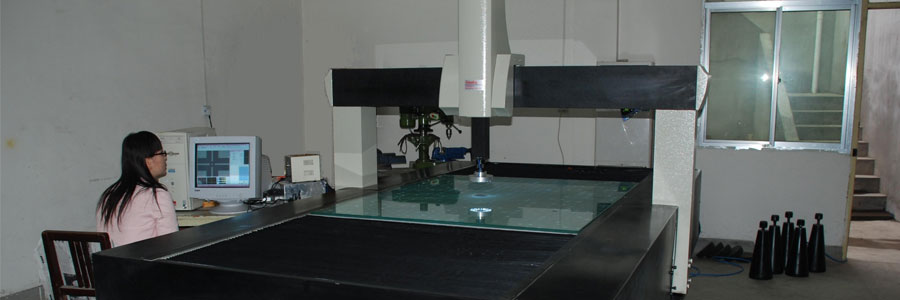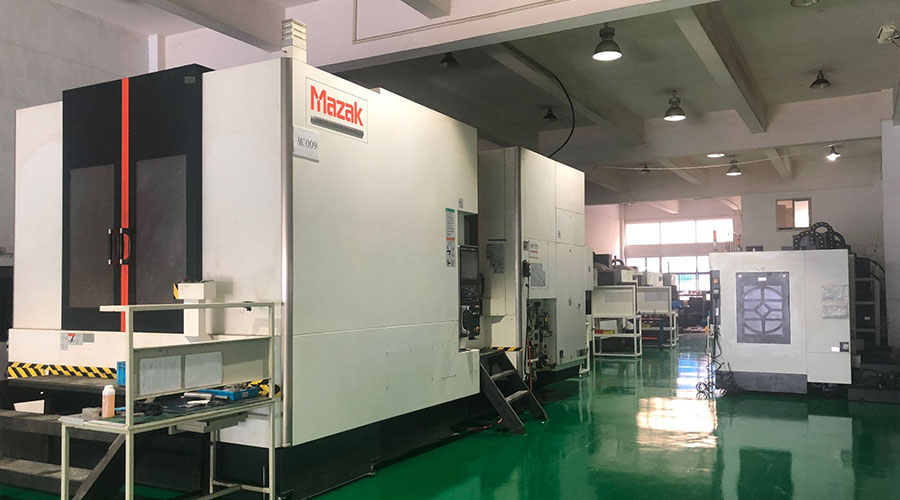Analyze the causes of deformation during machining of mechanical parts
| Machining performance is not only related to the interests of enterprises, but also related to safety. While bringing economic benefits to enterprises, it can also effectively reduce the probability of occurrence of security incidents. |

1.1 Internal force causes the machining accuracy of parts to change
When lathe machining, it is usually the use of centripetal force to clamp the parts with the three-claw or four-jaw chuck of the lathe, and then machine the mechanical parts. At the same time, in order to ensure that the part does not loosen when the force is applied and the internal radial force is reduced, the clamping force must be made larger than the mechanical cutting force. The clamping force increases as the cutting force increases, and decreases with decreasing. This kind of operation can make the mechanical parts stable during the processing. However, after the three-jaw or four-jaw chuck is loosened, the machined parts will be far from the original ones, some appear polygonal, some appear elliptical, and there is a large deviation.
1.2 Deformation problem easily after heat treatment
For sheet-like mechanical parts, since the long diameter is very large, the straw cap is likely to be bent after heat treatment. On the one hand, there will be a phenomenon of bulging in the middle, the plane deviation is increased, and on the other hand, due to various external factors, the parts are bent. These deformation problems are not only caused by changes in the internal stress of the parts after heat treatment, but also the professional knowledge of the operators is not solid, and the structural stability of the parts is not well understood, thereby increasing the probability of deformation of the parts.
1.3 Elastic deformation caused by external force
There are several main reasons for the elastic deformation of parts during machining. First, if the internal structure of some parts contains thin sheets, there will be higher requirements on the operation method. Otherwise, when the operator positions and clamps the parts, it cannot correspond to the design of the drawings, which is easy to cause elastic deformation. produce. The second is the unevenness of the lathe and the clamp, so that the forces on both sides of the parts are not uniform when the fixing is performed, and the side with a small force applied during the cutting will be deformed by the force under the action of the force. Third, the positioning of the parts during the processing is unreasonable, so that the rigidity of the parts is reduced. Fourth, the existence of cutting force is also one of the causes of elastic deformation of parts. The elastic deformation caused by these different reasons indicates the influence of external force on the machining quality of mechanical parts.
2.Improvement measures for machining deformation of mechanical parts
In actual part machining, there are many factors that cause the part to deform. In order to fundamentally solve these deformation problems, the operator needs to carefully explore these factors in the actual work, and combine the work essentials to develop improvement measures.
2.1 Use special fixtures to reduce clamping deformation
In the processing of mechanical parts, the requirements for refinement are very strict. For different parts, different special tooling can be used to make the parts less prone to displacement during processing. In addition, before processing, the staff also needs to carry out corresponding preparation work, comprehensively check the fixed parts, check the correctness of the mechanical parts according to the drawings, to reduce the deformation of the clamping.
2.2 Finishing processing
Parts are prone to deformation problems after heat treatment, which requires measures to ensure the safety of the parts. After the mechanical parts have been processed and naturally deformed, professional tools are used for finishing. When trimming the machined parts, it is necessary to follow the industry’s standard requirements to ensure the quality of the parts and extend their service life. This method is most effective after the part is deformed. If the part is deformed after heat treatment, it can be tempered after quenching. Since residual austenite is present in the part after quenching, these substances are further transformed into martensite at room temperature, and then the object expands. Every detail should be taken seriously when processing parts, so that the probability of deformation of parts can be reduced, the design concept on the drawings can be grasped, and the products produced can meet the standards according to the production requirements, improve economic efficiency and work efficiency, thus ensuring machinery. The quality of the part processing.
2.3 Improve the quality of blanks
In the specific operation process of various equipments, improving the quality of the blank is a guarantee to prevent the deformation of the parts, so that the finished parts meet the specific standard requirements of the parts and provide guarantee for the use of the later parts. Therefore, the operator needs to check the quality of different blanks, and replace the defective blanks in time to avoid unnecessary problems. At the same time, the operator needs to select reliable blanks in accordance with the specific requirements of the equipment to ensure that the quality and safety of the processed parts meet the standard requirements, thereby extending the service life of the parts.
2.4 Increase the rigidity of the part to prevent excessive deformation
In the machining of mechanical parts, the safety performance of the parts is affected by many objective factors. Especially after the parts are heat treated, the parts will be deformed due to stress shrinkage. Therefore, in order to prevent the occurrence of deformation, the technician needs to select a suitable heat-limiting type of treatment to change the rigidity of the part. This requires a combination of the performance of the part and the use of suitable heat-limiting treatment measures to ensure safe and reliable. Even after heat treatment, no significant deformation occurs.
2.5 Measures to reduce the clamping force
When machining parts with poor rigidity, some measures need to be taken to increase the rigidity of the parts, such as the auxiliary support. Also pay attention to the contact area between the point and the part. According to the different parts, choose different clamping methods. For example, when processing thin-walled parts, you can use elastic shaft device for clamping. Note that the tightening position should be Choose a part with a strong rigidity. For long-axis mechanical parts, both ends can be used. For parts with very long diameters, it is necessary to clamp the two ends together. You cannot use the method of “clamping at one end and hanging at one end”. In addition, in the processing of cast iron parts, the design of the fixture needs to be based on the principle of increasing the rigidity of the cantilever portion. A new type of hydraulic clamping tool can also be used to effectively prevent quality problems caused by the clamping deformation of the part during processing.
2.6 Reduce cutting force
In the cutting process, it is necessary to closely combine the machining requirements with the angle of cutting to reduce the cutting force. The rake angle and the main declination of the tool can be maximized to make the blade sharp, and a reasonable tool is also crucial for the turning force in turning. For example, in the turning of thin-walled parts, if the front angle is too large, the wedge angle of the tool will be increased, the wear speed will be accelerated, and the deformation and friction will be reduced. The size of the front corner can be selected according to different tools. If a high-speed tool is used, the rake angle is preferably 6° to 30°; if a cemented carbide tool is used, the rake angle is preferably 5° to 20°.
Conclusion: There are many factors that cause the deformation of mechanical parts, and different measures should be taken to solve different reasons. In practice, we must pay attention to every detail of machining, constantly improve the production process, and strive to minimize economic losses, to ensure the stable operation of machinery and equipment, to achieve the high-quality, high-efficiency objectives of machining, thus promoting the machining industry has A better development prospect and a broader market.
Link to this article: Common mechanical machining errors and improvement measures
Reprint Statement: If there are no special instructions, all articles on this site are original. Please indicate the source for reprinting:https://www.cncmachiningptj.com/,thanks!
 PTJ® provides a full range of Custom Precision cnc machining china services.ISO 9001:2015 &AS-9100 certified. 3, 4 and 5-axis rapid precision CNC machining services including milling, turning to customer specifications,Capable of metal & plastic machined parts with +/-0.005 mm tolerance.Secondary services include CNC and conventional grinding, drilling,die casting,sheet metal and stamping.Providing prototypes, full production runs, technical support and full inspection.Serves the automotive, aerospace, mold&fixture,led lighting,medical,bicycle, and consumer electronics industries. On-time delivery.Tell us a little about your project’s budget and expected delivery time. We will strategize with you to provide the most cost-effective services to help you reach your target,Welcome to Contact us ( [email protected] ) directly for your new project.
PTJ® provides a full range of Custom Precision cnc machining china services.ISO 9001:2015 &AS-9100 certified. 3, 4 and 5-axis rapid precision CNC machining services including milling, turning to customer specifications,Capable of metal & plastic machined parts with +/-0.005 mm tolerance.Secondary services include CNC and conventional grinding, drilling,die casting,sheet metal and stamping.Providing prototypes, full production runs, technical support and full inspection.Serves the automotive, aerospace, mold&fixture,led lighting,medical,bicycle, and consumer electronics industries. On-time delivery.Tell us a little about your project’s budget and expected delivery time. We will strategize with you to provide the most cost-effective services to help you reach your target,Welcome to Contact us ( [email protected] ) directly for your new project.
Link to this article:Common mechanical machining errors and improvement measures
Reprint Statement: If there are no special instructions, all articles on this site are original. Please indicate the source for reprinting.:Cut Wiki,Thanks!^^
